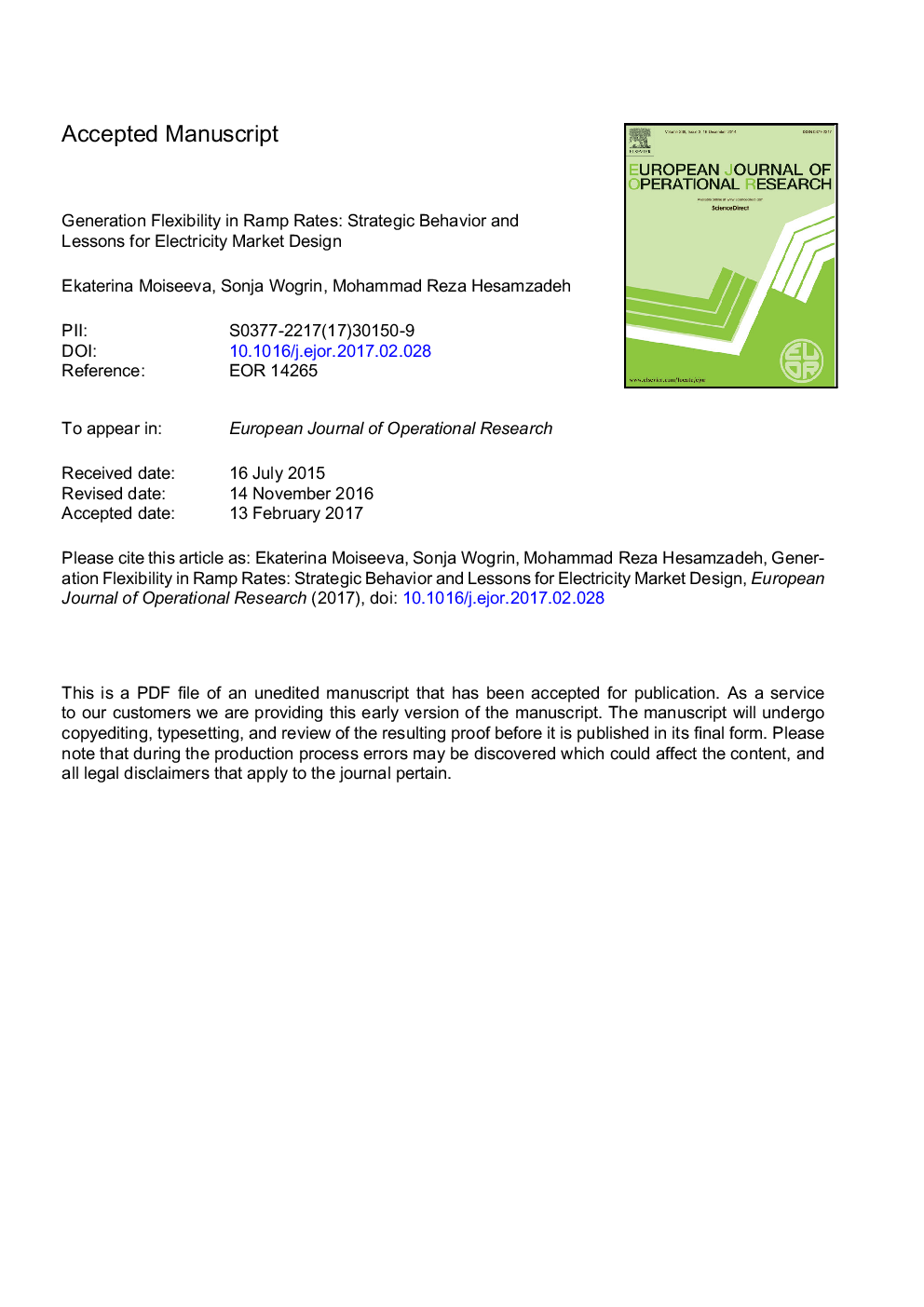| کد مقاله | کد نشریه | سال انتشار | مقاله انگلیسی | نسخه تمام متن |
|---|---|---|---|---|
| 4959655 | 1445953 | 2017 | 37 صفحه PDF | دانلود رایگان |
عنوان انگلیسی مقاله ISI
Generation flexibility in ramp rates: Strategic behavior and lessons for electricity market design
ترجمه فارسی عنوان
انعطاف پذیری نسبی در نرخ رمپ: رفتار استراتژیک و درس برای طراحی بازار برق
دانلود مقاله + سفارش ترجمه
دانلود مقاله ISI انگلیسی
رایگان برای ایرانیان
کلمات کلیدی
موضوعات مرتبط
مهندسی و علوم پایه
مهندسی کامپیوتر
علوم کامپیوتر (عمومی)
چکیده انگلیسی
A ramp rate usually defines the speed at which an electric power producer can decrease or increase its production in limited time. The availability of fast-ramping generators significantly affects the economic dispatch, especially in the systems with high penetration of intermittent energy sources, e.g. wind power, since the fluctuations in supply are common and sometimes unpredictable. One of the regulatory practices of how to impel generators to provide their true ramp rates is to separate the stages of submitting the bids on ramp rate and production. In this paper we distinguish two types of market structures: one-stage - when electric power producers are deciding their production and ramp rate at the same time, or two-stage - when generators decide their ramp rate first, and choose their production levels at the second stage. We employ one-stage and two-stage equilibrium models respectively to represent these market setups and use a conjectured price response parameter ranging from perfect competition to the Cournot oligopoly to investigate the effect of the market competition structure on the strategic decisions of the generators. We compare these two market setups in a symmetric duopoly case with two time periods and prove that in the two-stage market setup the level of ramp rate is independent of the strategic behavior in the spot market and generally lower than the one offered in the one-stage setup. We also show that the ramp-rate levels in one- and two-stage models coincide at the Cournot oligopoly. We extend the model to asymmetry, several load periods, portfolio bidding, and uncertainty, and show that withholding the ramp rate still occurs in both models. Our findings prove that market regulators cannot rely on only separating the decision stages as an effective measure to mitigate market power and in certain cases it may lead to an adverse effect.
ناشر
Database: Elsevier - ScienceDirect (ساینس دایرکت)
Journal: European Journal of Operational Research - Volume 261, Issue 2, 1 September 2017, Pages 755-771
Journal: European Journal of Operational Research - Volume 261, Issue 2, 1 September 2017, Pages 755-771
نویسندگان
Ekaterina Moiseeva, Sonja Wogrin, Mohammad Reza Hesamzadeh,
